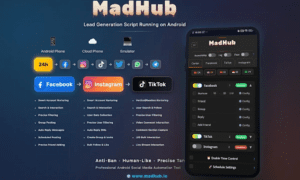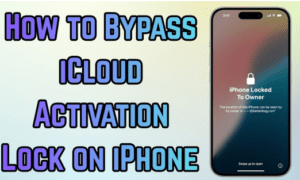Security remains a paramount concern for individuals and businesses alike. One of the most effective ways to secure sensitive data and online accounts is through Two-Factor Authentication (2FA). This system adds an additional layer of protection, ensuring that even if a password is compromised, unauthorized access can still be prevented.
What Is Two-Factor Authentication?
Two-Factor Authentication, often abbreviated as 2FA, is a security mechanism that requires users to provide two distinct forms of identification before gaining access to an account or system. Unlike traditional single-factor authentication, which relies solely on a password, 2FA uses a combination of factors to verify a user’s identity. These factors generally fall into three categories:
- Something You Know: A password, PIN, or answer to a security question.
- Something You Have: A physical device, such as a smartphone, security token, or key card.
- Something You Are: Biometric data, like fingerprints, facial recognition, or voice patterns.
- By combining two of these factors, 2FA significantly reduces the risk of unauthorized access, making it a critical tool in cybersecurity.
Why Is Two-Factor Authentication Important?
Passwords alone are no longer sufficient to safeguard sensitive information. Cybercriminals employ advanced tactics, such as phishing, brute force attacks, and credential stuffing, to gain unauthorized access. Two-Factor Authentication adds an extra layer of security, making it much harder for attackers to succeed. Here are some key reasons why 2FA is essential:
- Enhanced Security: Even if a password is stolen, access is denied without the second factor.
- Reduced Risk of Data Breaches: Many high-profile data breaches could have been avoided with 2FA.
- Compliance with Regulations: Industries like finance and healthcare often mandate 2FA to meet security standards.
- Boosted User Trust: Implementing 2FA shows a commitment to protecting user data, enhancing trust.
Types of Two-Factor Authentication Solutions
There are various types of 2FA solutions available, each catering to different needs and levels of security. Let’s delve into the most common ones:
SMS-Based Authentication
This method sends a one-time password (OTP) via SMS to the user’s registered mobile number. While convenient, it is not the most secure option due to vulnerabilities like SIM swapping and interception of messages.
Authenticator Apps
Apps like Google Authenticator, Authy, and Microsoft Authenticator generate time-sensitive OTPs. These apps operate independently of the network, making them more secure than SMS-based methods.
Hardware Tokens
Hardware tokens are physical devices that generate OTPs. Examples include key fobs and USB security keys. These solutions are highly secure but can be inconvenient for some users due to the need to carry an additional device.
Biometric Authentication
Biometric methods use unique physical characteristics, such as fingerprints, facial recognition, or iris scans, to verify identity. This type of authentication is highly secure and increasingly popular, thanks to advancements in technology.
Push Notifications
Push notification-based 2FA sends a prompt to the user’s device, asking them to approve or deny a login attempt. This method is both secure and user-friendly, as it eliminates the need to enter codes manually.
Email-Based Authentication
Email-based 2FA sends a verification code or link to the user’s registered email address. While convenient, it is less secure than other methods due to potential email account compromises.
Multi-Factor Authentication (MFA)
Though slightly different, MFA incorporates more than two factors for added security. For example, a user might need a password, a hardware token, and biometric verification.
Benefits of Implementing 2FA Solutions
The adoption of Two-Factor Authentication solutions offers numerous benefits, particularly for businesses handling sensitive information. Some of the key advantages include:
- Stronger Defense Against Cyberattacks: 2FA significantly reduces the chances of unauthorized access.
- Improved User Experience: Modern 2FA methods, like push notifications, are intuitive and seamless.
- Regulatory Compliance: Businesses can meet industry-specific security requirements.
- Cost-Effective Security: Preventing data breaches saves businesses from financial and reputational damage.
How to Choose the Right 2FA Solution
Selecting the right 2FA solution depends on various factors, including the level of security required, user convenience, and budget. Consider the following when evaluating options:
- Risk Assessment: Identify the potential risks and vulnerabilities your organization faces.
- User Base: Ensure the solution is accessible and easy to use for all users.
- Integration Capabilities: Verify compatibility with existing systems and applications.
- Cost: Balance the cost of implementation with the level of security provided.
- Scalability: Choose a solution that can grow with your organization’s needs.
Best Practices for Implementing 2FA
To maximize the effectiveness of Two-Factor Authentication, follow these best practices:
- Educate Users: Train users on the importance of 2FA and how to use it correctly.
- Regularly Update Security Protocols: Stay up to date with the latest security standards and technologies.
- Implement Across All Systems: Ensure 2FA is enabled for all critical accounts and applications.
- Monitor and Audit: Continuously monitor for suspicious activities and conduct regular security audits.
- Provide Backup Options: Offer alternative authentication methods, such as backup codes or email verification, to avoid lockouts.
Challenges and Limitations of 2FA
Despite its many benefits, Two-Factor Authentication is not without challenges. Some common limitations include:
- User Resistance: Some users may find 2FA inconvenient or difficult to understand.
- Device Dependency: Losing access to the second factor, such as a smartphone or hardware token, can cause issues.
- Cost of Implementation: For large organizations, deploying 2FA can be resource-intensive.
- False Sense of Security: While 2FA enhances security, it is not foolproof and should be part of a broader cybersecurity strategy.
The Future of Two-Factor Authentication
As technology evolves, so do the methods used for authentication. The future of 2FA looks promising, with advancements like passwordless authentication, biometric innovations, and the integration of artificial intelligence to detect and prevent fraud. These developments aim to make authentication even more secure and user-friendly.
Conclusion
Two-Factor Authentication is a powerful tool for enhancing security in today’s digital terrain. By requiring an additional layer of verification, it protects against unauthorized access and reduces the risk of data breaches. While challenges exist, the benefits of implementing 2FA far outweigh the drawbacks. Whether you’re an individual or a business, adopting a robust 2FA solution is a critical step toward safeguarding sensitive information and building trust in a connected world.































